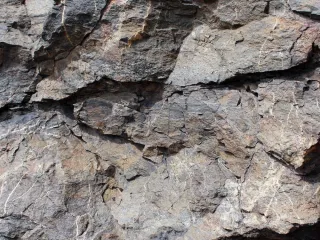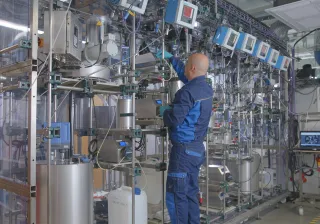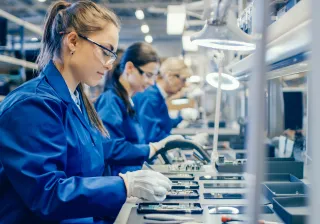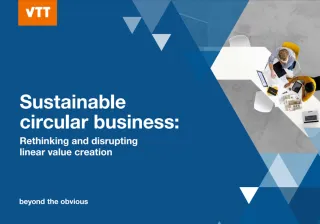As part of its sustainability efforts, explosives technology expert FORCIT wanted to develop a process that would allow the otherwise unusable ammonium nitrate produced during the life cycle of emulsion explosives to be recovered and reused as a raw material in the production of explosives. VTT supported FORCIT in finding a solution that has both environmental and financial benefits.
Key facts
Challenge: Certain unusable batches of emulsion matrix containing ammonium nitrate are rejected and discarded.
Development: A new way to separate the ammonium nitrate from the rejected emulsion and recycle it into the process.
Benefit: FORCIT can make sustainable use of the valuable raw material and simultaneously reduce its environmental load.
FORCIT Explosives – a leading partner for civil explosives and related services – is one of the business areas of Finnish FORCIT Group. The company provides services and knowledge related to blasting and the environmental impact assessments of excavation. FORCIT Explosives’ wide product range includes excavation explosives and related services throughout the life cycle of an excavation project, from design to the disposal of unused explosives.

Utilising VTT’s resources enabled us to systematically test an extensive number of potential methods for the separation process.
Making the most of raw materials
In line with the FORCIT Group’s goal to be carbon neutral in its operations by 2035, the company has made investments to reduce its carbon footprint. Part of this effort is raising the share of recycling within the Group, which increased significantly already in 2023 from 29% to 52%.
According to Development Manager Timo Halme from FORCIT Explosives, the production process of emulsion explosives involves using a solution of ammonium nitrate and water as the main raw material. During the product’s life cycle, part of the emulsion explosives ends up as an unusable side stream, which is disposed of by burning.
“The emulsion has a high level of ammonium nitrate, which is of course a valuable raw material. The disposal process itself is expensive and not particularly sustainable – including transportation to a facility in Sweden where the side stream is currently burned. Burning such material also includes safety risks. That’s why recovering the ammonium nitrate from the emulsion to be recycled in our processes is something that we’ve been looking into for years,” Halme explains.
Laboratory Manager Laura Pitkäjärvi at FORCIT Explosives initially led the company’s own research into finding a suitable method for separating the ammonium nitrate. However, taking the research to the next level required additional resources in personnel and equipment.
“Based on our successful collaboration on previous projects, and their expertise in chemical process and separation technologies, we decided to ask VTT. Utilising VTT’s resources enabled us to systematically test an extensive number of potential methods for the separation process,” Pitkäjärvi says.

Winning solution through extensive testing
During the research project, we provided FORCIT with:
Deep expertise in chemical process and separation technologies
Resources for testing a vast range of chemical and physical separation methods
Versatile test facilities
Equipment for upscaling the process to pilot level.
Senior Scientist Hanna Kyllönen from VTT notes that it was easy to launch the project based on FORCIT’s groundwork and then utilise our own resources for testing and upscaling the separation process from laboratory level to pilot phase.
“Besides safety, quality was a crucial issue for FORCIT. We were mainly concerned whether the recycled ammonium nitrate would be pure enough. Together we were able find the best possible solution out of the numerous methods tested and proved that the ammonium nitrate recovery process worked on the pilot level,” Kyllönen says.

I don’t know if we’d ever have been able to reach this point on our own, and certainly not so quickly without help from VTT.
Hitting both environmental and economic targets
Considering the value of teaming up with VTT, Forcit’s Halme points out that the cooperation made the project move along much more efficiently.
“I don’t know if we’d ever have been able to reach this point on our own, and certainly not so quickly without help from VTT. Their expert resources in chemical process technology and separation methods expedited the project significantly,” Halme analyses, adding that the project also helped to prepare for potentially tightening regulation concerning the disposal of explosives.
VTT’s Senior Scientist Antti Grönroos wants to highlight how FORCIT is one of those companies that is incredibly easy to collaborate with.
“It’s not always self-evident that there’s such a level of trust, but in this case, we shared everything transparently and were able to discuss also difficult issues openly. This made working on this project really smooth,” Grönroos enthuses.
After a successful pilot phase, Halme says that FORCIT is now making plans for a full-scale facility. Alongside this, the company is already looking into the next joint research projects for recycling other side stream fractions that are currently underutilised. This itself is a sign that FORCIT has been happy with the results. What’s more, the process has been proven in the pilot phase to be economically promising.
“This project has shown that it’s not always considerably more expensive to choose the environmentally sound option. Here, we have succeeded in combining environmental values with an extremely cost-effective, commercially sound solution,” VTT’s Customer Account Lead Tuomas Pinomaa concludes.
Feel like optimising your production process? Contact us here.





